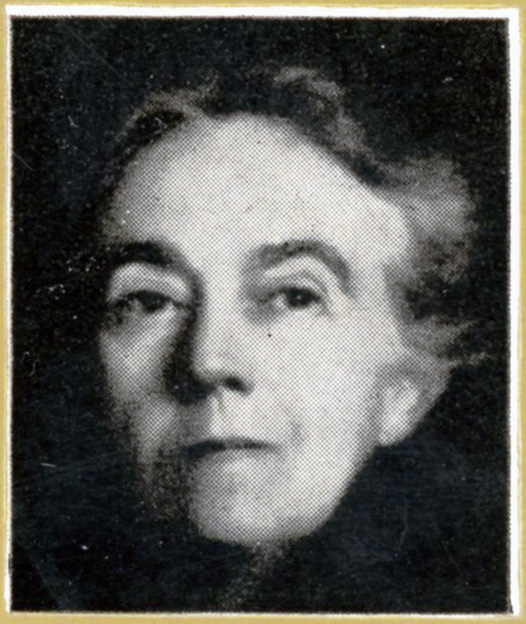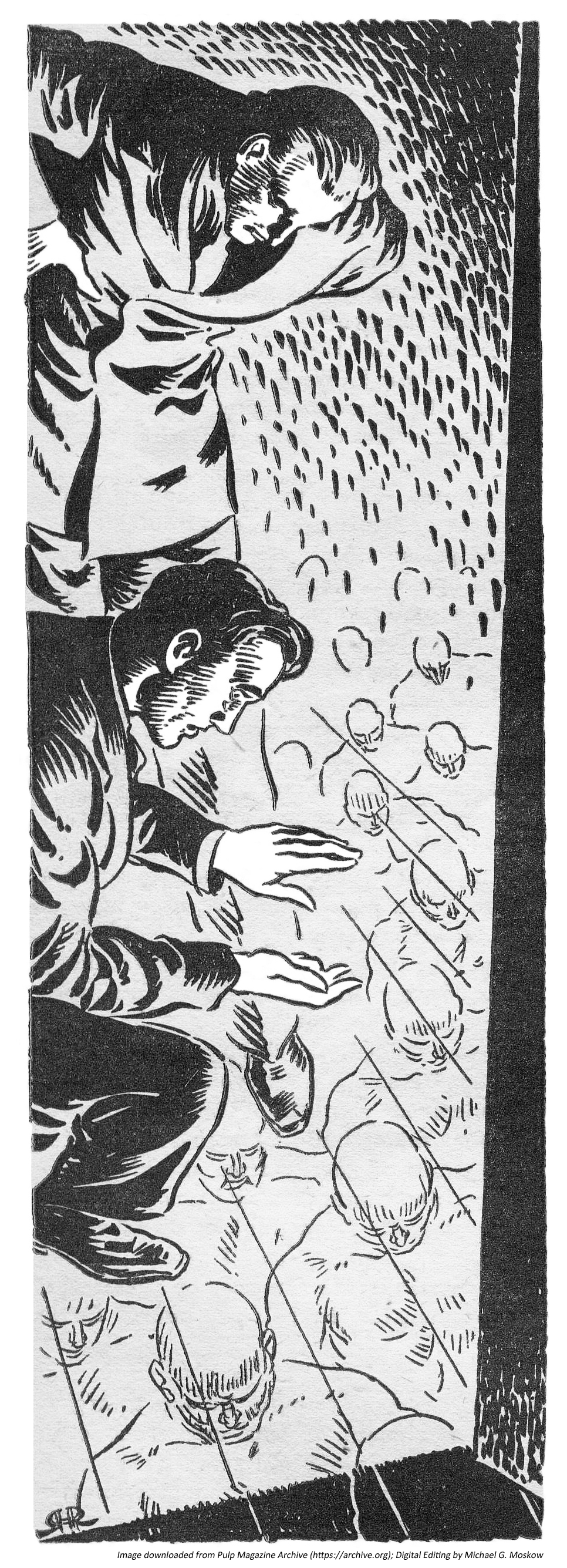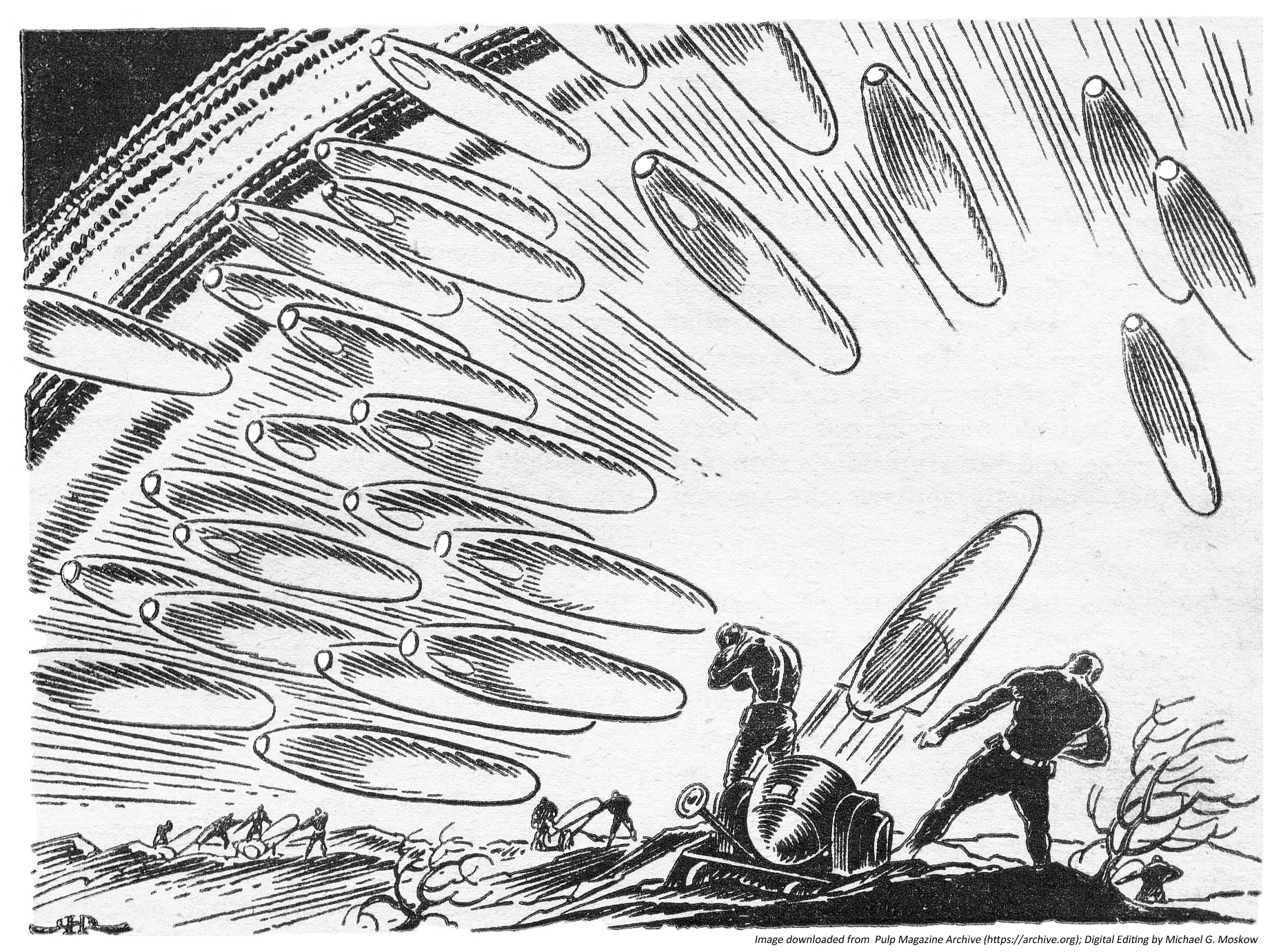The cover of Book 3 of Before the Golden Age follows the style of Books 1 and 2 of the series, albeit with a twist: The figure of a man wearing a white protective suit and helmet stands before an urban skyline, with an orange sun setting (or is it rising?) in the background.
But, the figure is a toy, the skyline is comprised of pieces of rectangular plastic, the orange “sun” is made of an unidentifiable “something”, and red spherical plastic something-“bubbles” float across the scene. It’s interesting to contemplate how such a scene would have appeared in the form of a panting by Bok, Emsh, Freas, Schoenherr, or Powers (especially Powers!): Probably far more compelling. But, still, that’s what we have, and it does connote at least some kind of atmosphere and mood – albeit unrelated to any of the stories in the volume.
As those stories go, in terms of numbers of really good stories, Book 3 is the best of the trio. Murray Leinster’s “Proxima Centauri” is excellent, while Edmond Hamilton’s “Devolution” is very well written, fast-paced, and would have suited equally well for appearance in such a venue as Weird Tales. You kind of “know” how the story will conclude well before its ending, but the literary “ride” is fun, nonetheless.
Particularly notable and eminently worthy of inclusion are John W. Campbell, Junior’s, “The Brain Stealers of Mars” and “Other Eyes Watching”. Both stories – anticipating themes inherent to the works of Philip K. Dick – center around ideas of mimicry, identity, percepetion, and cognition. Though somewhat light-hearted in nature, they ultimately have a very serious bent, prefiguring Campbell’s well-known 1938 classic “Who Goes There?” (and its cinematic maladaptations) in which concepts used in the two stories are given frightening and fuller expression.
 Contents
Contents
Part Six: 1935
The Parasite Planet, by Stanley G. Weinbaum, from Astounding Stories, February, 1935
Proxima Centauri, by Murray Leinster (William Fitzgerald Jenkins), from Astounding Stories, March, 1935
The Accursed Galaxy, by Edmond Hamilton, from Astounding Stories, July, 1935
Part Seven: 1936
He Who Shrank, by Henry Hasse, from Amazing Stories, August, 1936
The Human Pets of Mars, by Leslie Francis Stone, from Amazing Stories, October, 1936
The Brain Stealers of Mars, by John W. Campbell, Jr., from Thrilling Wonder Stories, December, 1936
Devolution, by Edmond Hamilton, from Amazing Stories, December, 1936
Big Game, by Isaac Asimov (not previously published)
Part Eight: 1937
Other Eyes Watching, by John W. Campbell, Jr., from Astounding Stories, February, 1937
Minus Planet, by John D. Clark, from Astounding Stories, April, 1937
 You call me unfeeling. If you could only see
You call me unfeeling. If you could only see














